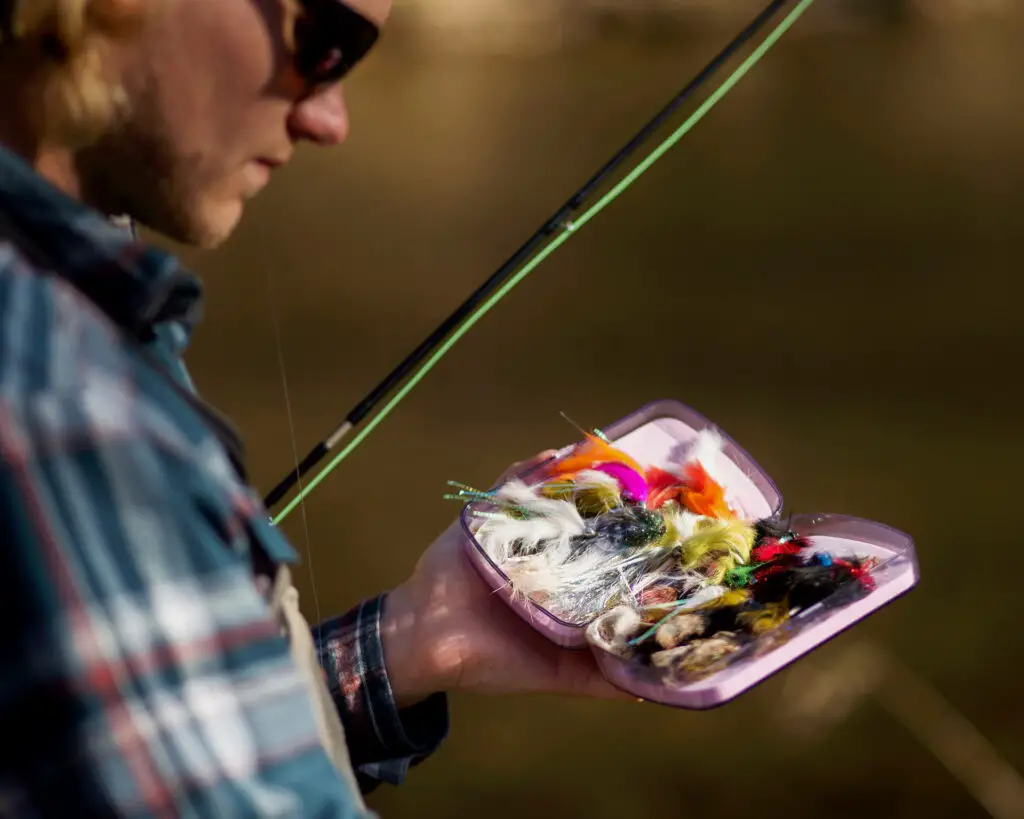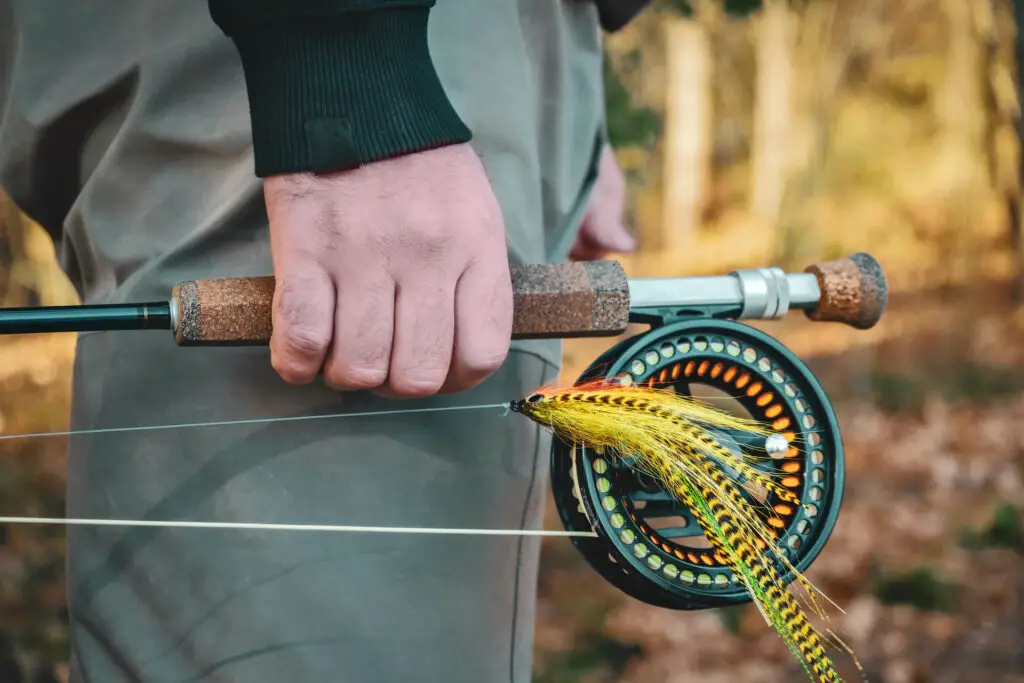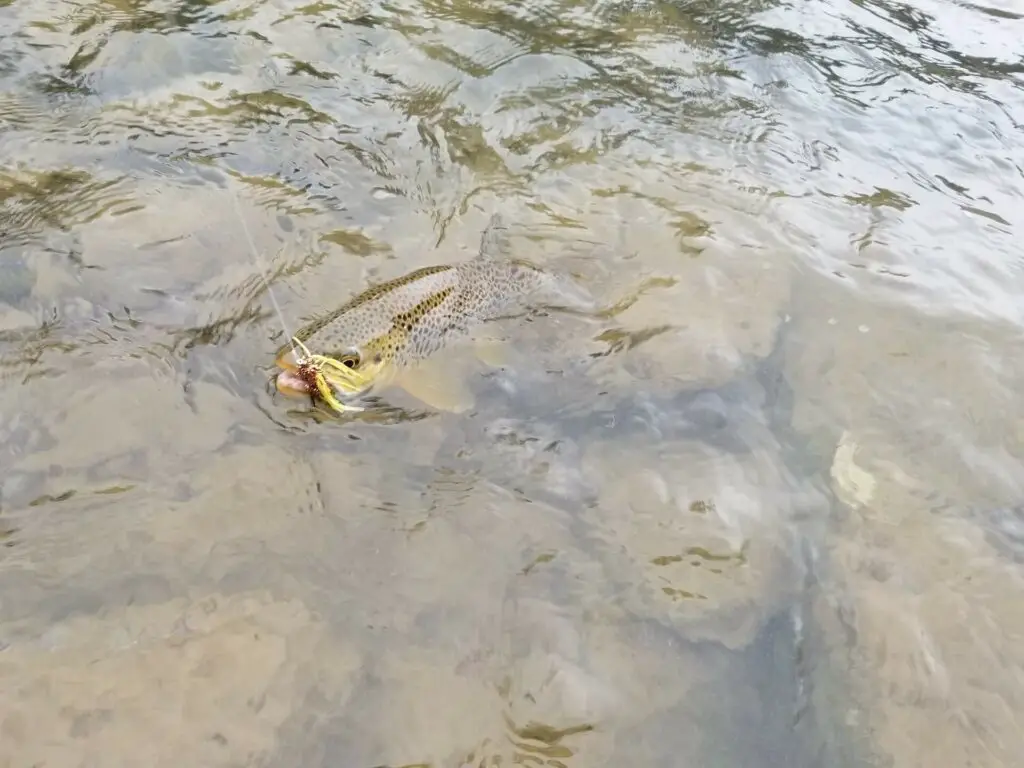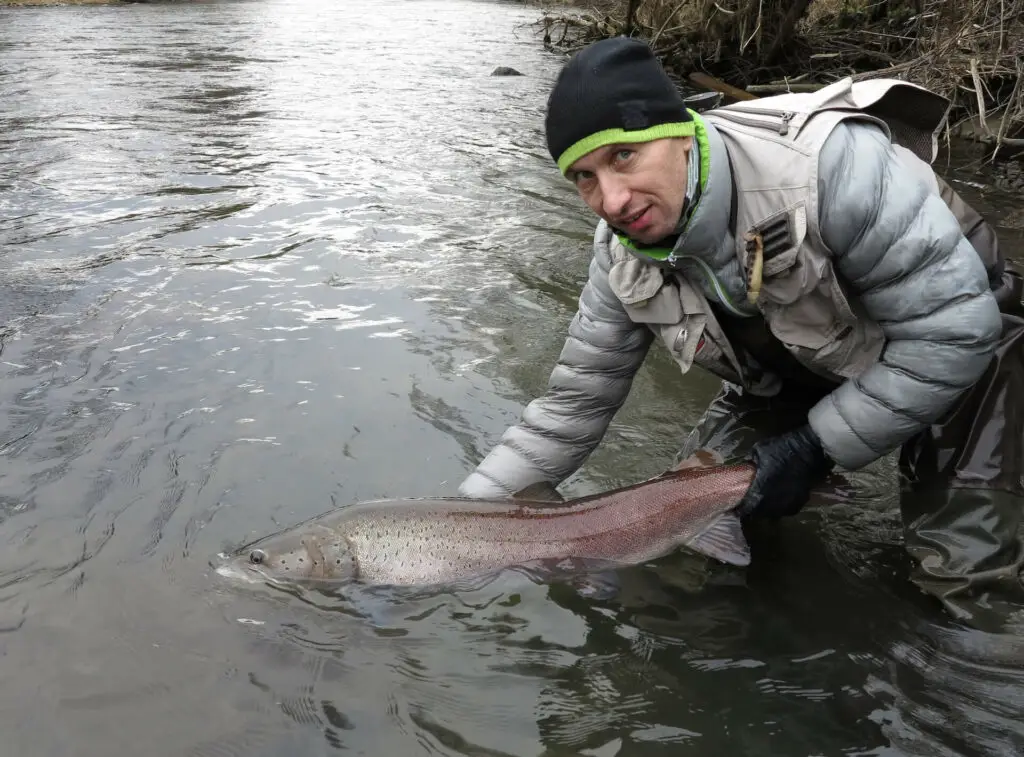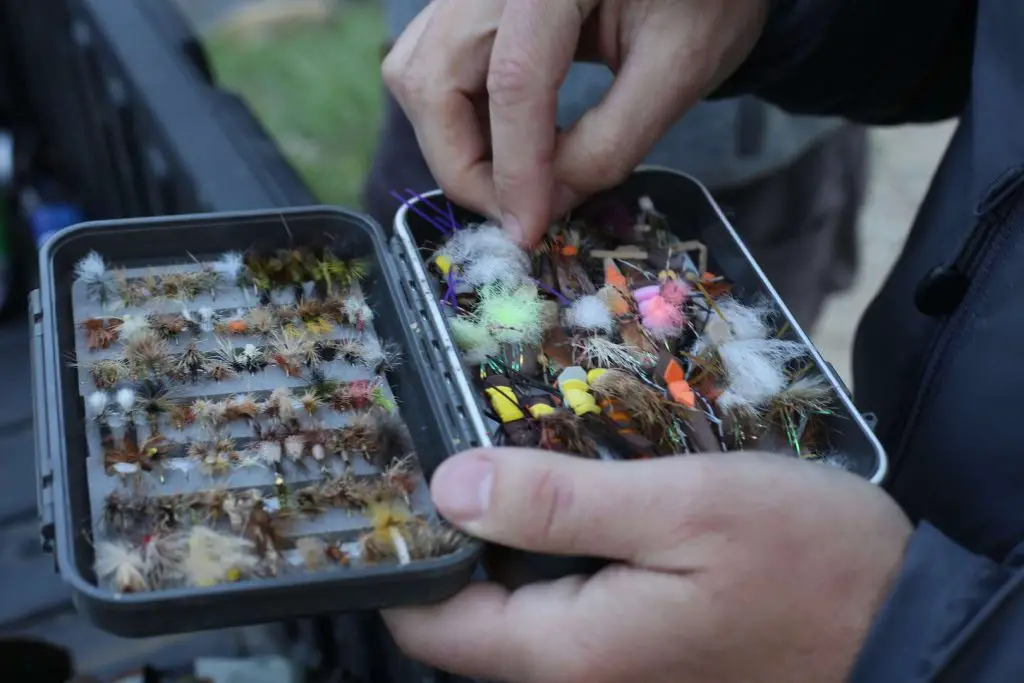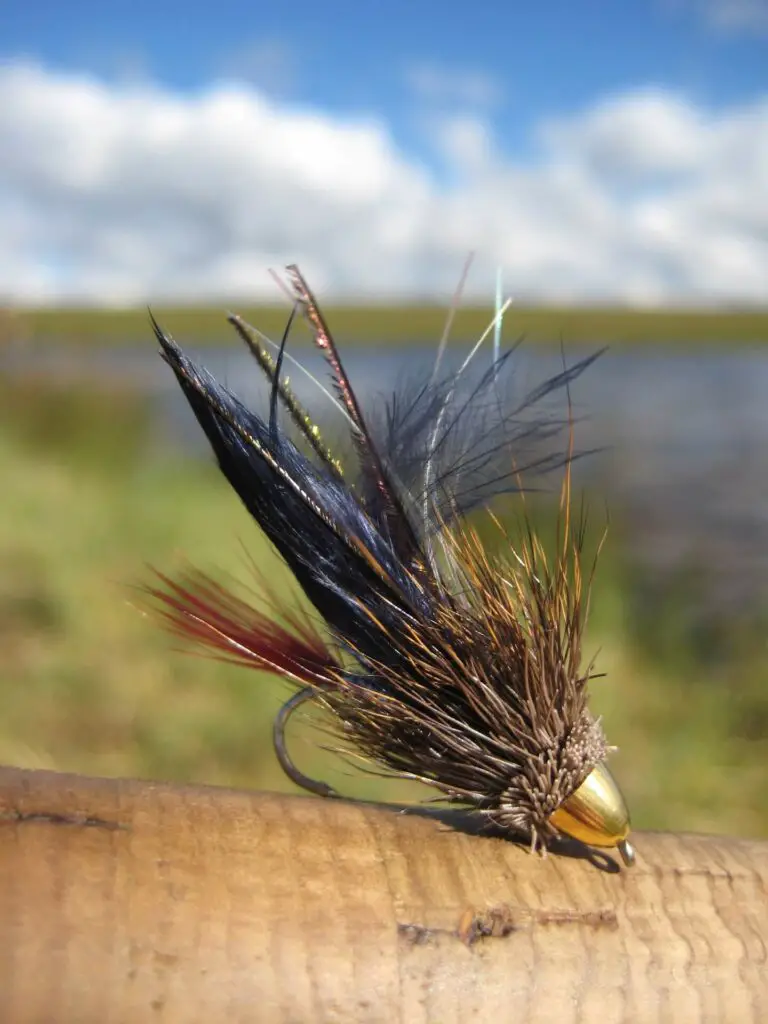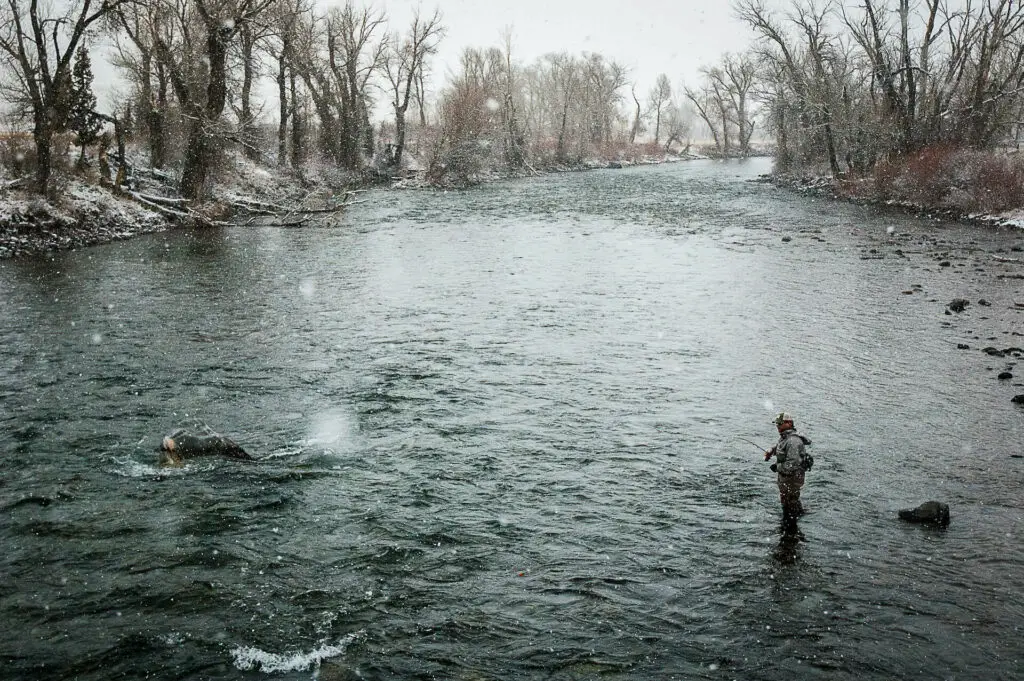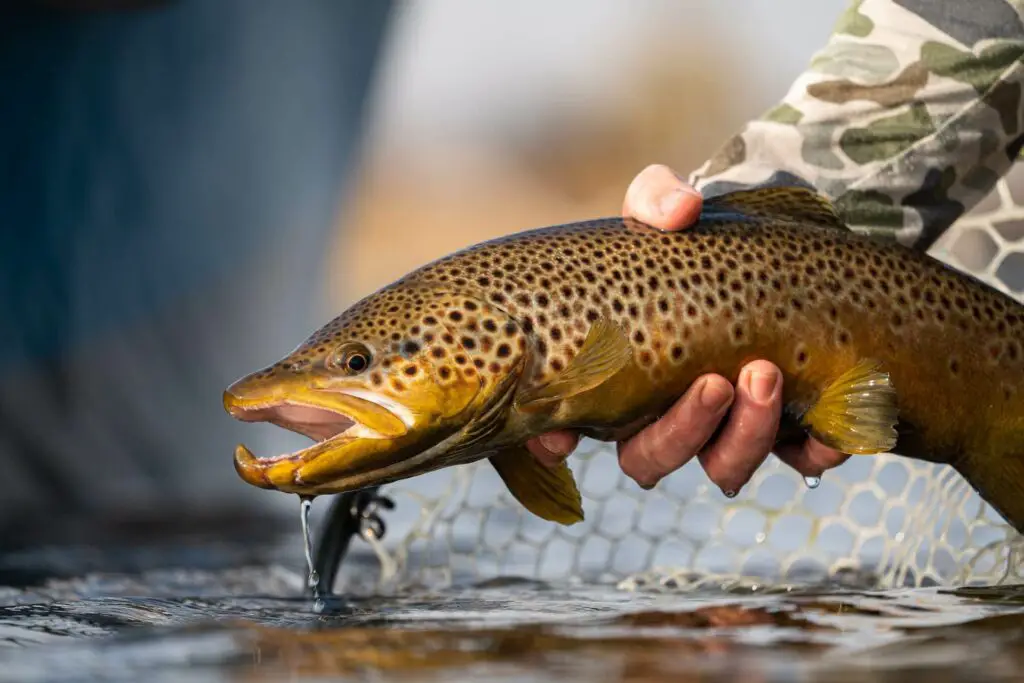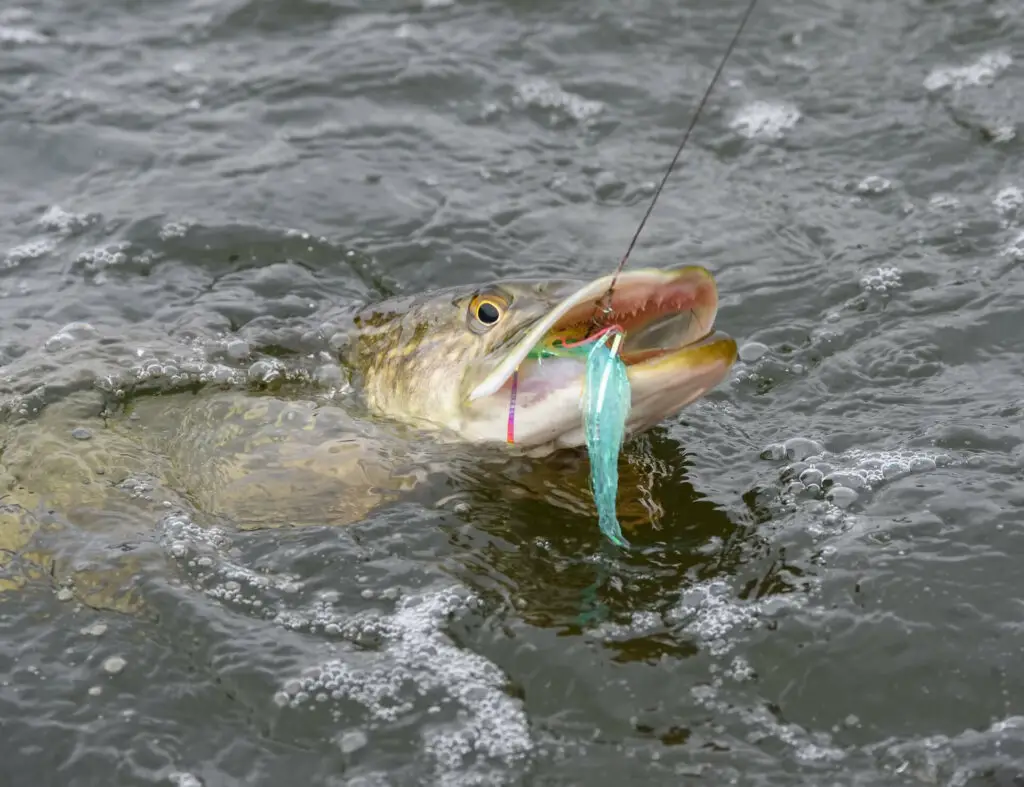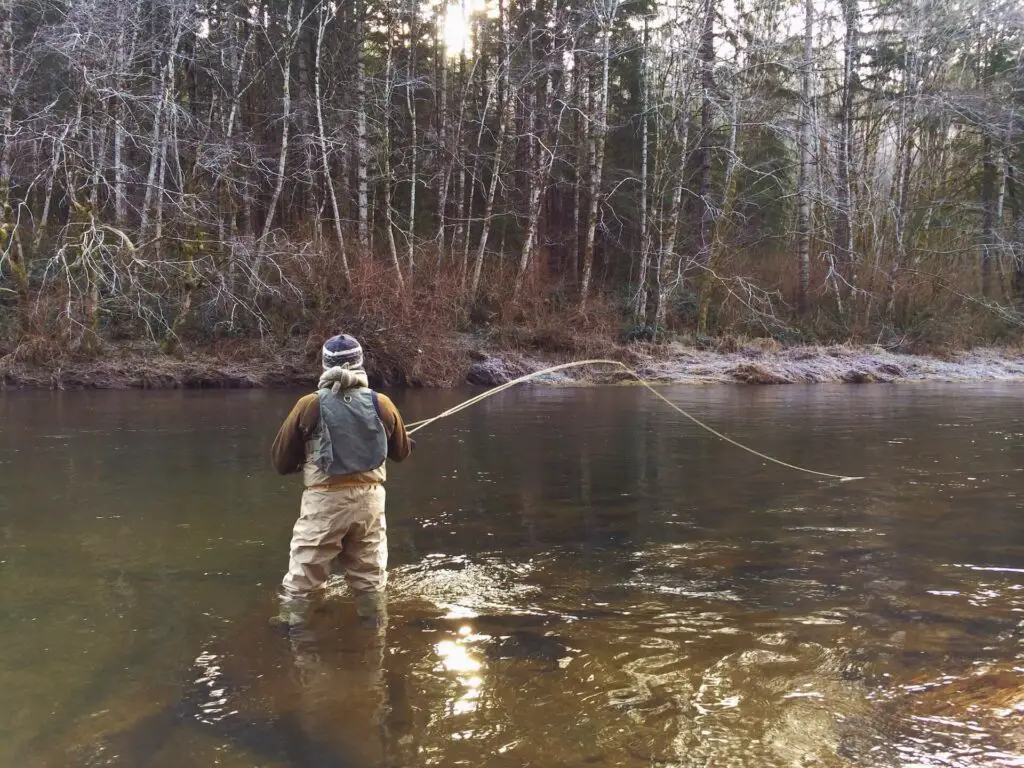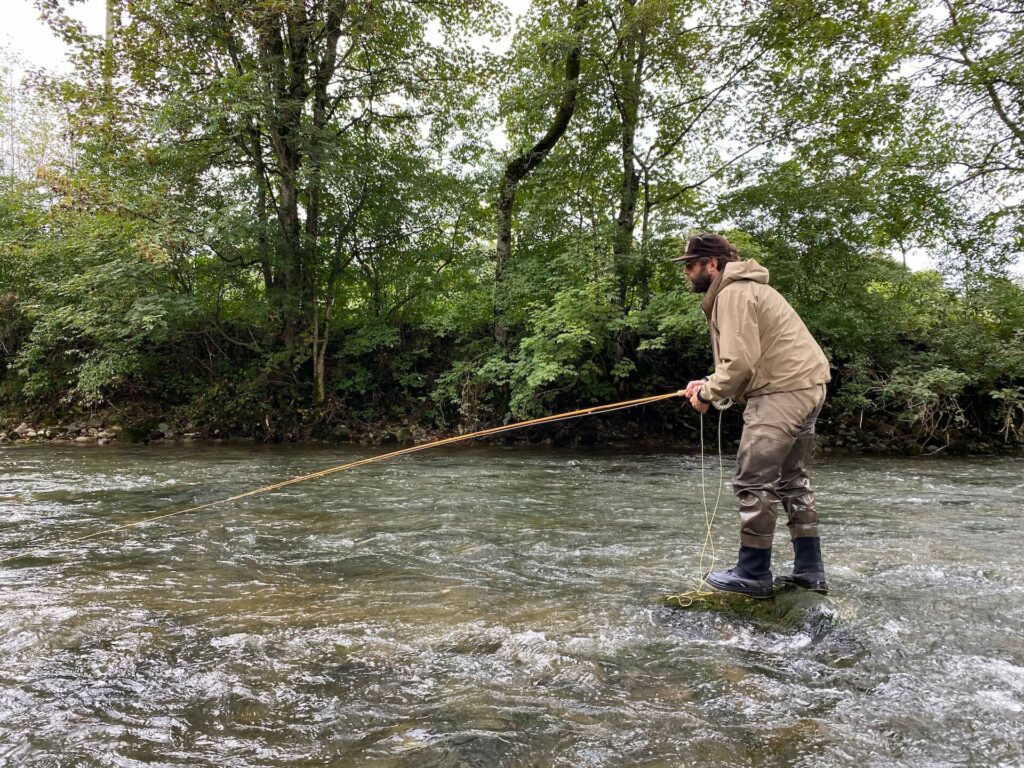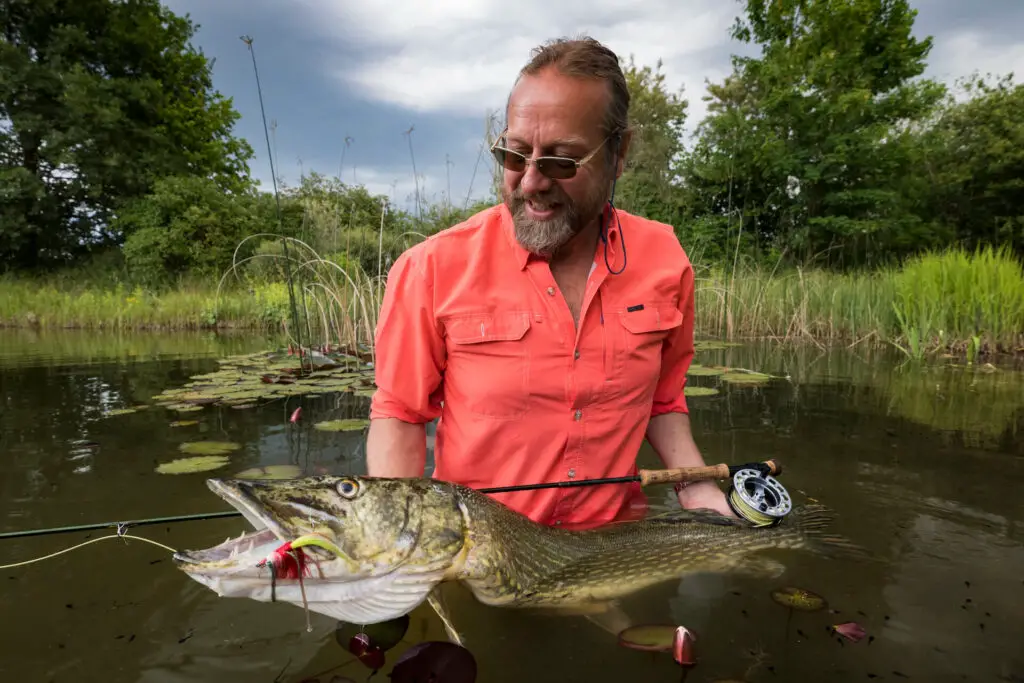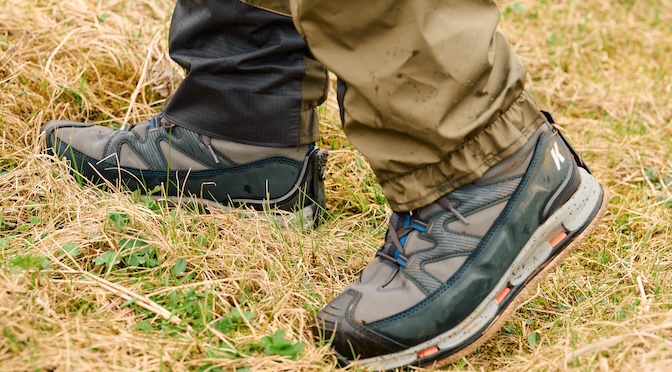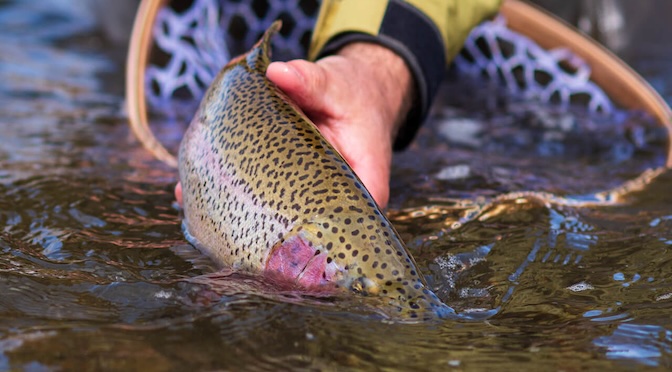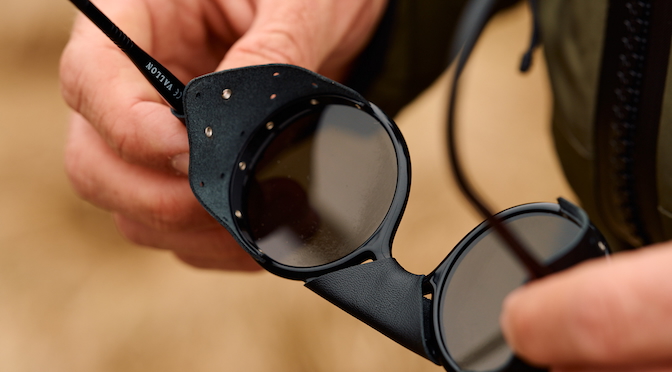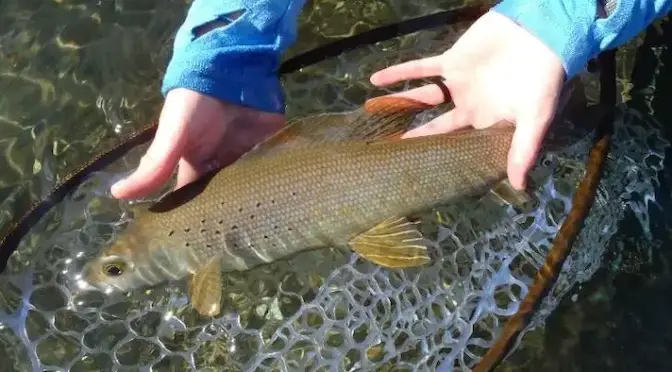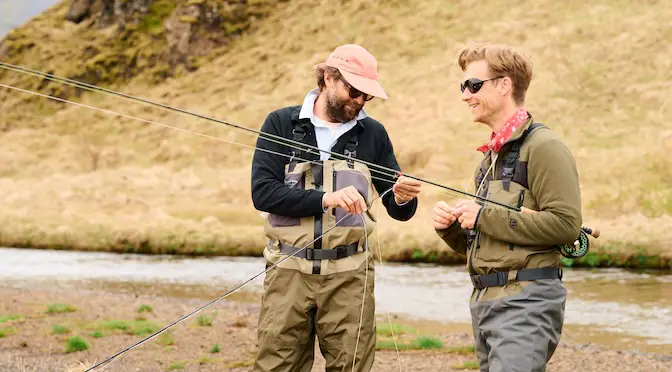Last updated on December 9th, 2023.
- On the Water with the Korkers Bantam Lite - June 26, 2025
- How to Find Trout in Rivers & Streams Anywhere - June 13, 2025
- Educating the Next Generation of Salmon Anglers - June 4, 2025
Fly fishing streamers is an exciting way to catch fish. Whether a beginner or veteran fly fisher, this form of fishing can be incredibly gratifying.
Streamer fishing requires some specialized knowledge and technique in order to get the most out of your experience. By utilizing the right gear and technique, this article will explain what streamer fishing is, when it should be used, where to use it for best results and how to effectively cast a streamer. So grab your rod and reel – let’s go explore the world of fly fishing with streamers.
Table of Contents:
Species to Target with a Streamer
What is Streamer Fishing?
Definition of Streamer Fishing
Streamer fishing is a type of fly fishing where anglers use streamers, or artificial lures, to catch predatory fish such as bass, trout or pike. These lures are typically tied with feathers, fur, or yarn and imitate baitfish or other aquatic prey. The goal is to entice the fish into striking by creating a realistic swimming action that mimics natural prey movement in the water.
Benefits of Streamer Fishing
Streamer fishing can be an effective way to target large predatory fish like bass and pike because it allows anglers to cover more water than traditional methods like nymphing or dry fly fishing. Additionally, streamers can be fished in deeper waters than most other types of flies due to their larger profile which makes them easier for predators to spot from further away distances. Lastly, streamers are often very durable so they can withstand multiple strikes without having to be replaced too frequently – saving money in the long run.
Types of Streamers
There are many different types of streamers available on the market today ranging from simple wet flies all the way up to articulated patterns that feature multiple sections connected together with wire loops for added realism when being retrieved through the water column. Common materials used include marabou feathers for a soft undulating motion as well as flashier synthetic fibers like crystal chenille which give off sparkles underwater when light hits them just right, making them irresistible targets for hungry predators.
Streamer fishing is an effective technique for catching fish in a variety of conditions. With the right knowledge and equipment, you can become a successful streamer fisherman. In order to get the best results, it is important to understand when streamer fishing should be employed.
When to Use a Streamer?
After Heavy Rainfall
Streamer fishing is a great option after heavy rainfall. When rivers and streams rise, the current picks up and carries more food downstream for fish to feed on. The larger profile of streamers can be seen in these conditions, making them an ideal choice for fly fishermen looking to catch some big fish.
When Baitfish are Present
Streamers are also great when baitfish such as minnows or shiners are present in the water. These small fish often become easy targets for bigger predators like bass, pike, and trout – all of which will readily take a well-presented streamer fly. If you see baitfish near the surface or at certain depths, it’s worth giving a streamer a try.
Lastly, don’t forget that streamers can be used year-round regardless of the weather. In cold winter months when other flies aren’t producing much action, casting out large streamers can still result in some strikes from hungry gamefish who haven’t had enough time to hibernate yet. Additionally, if you’re targeting species like musky or northern pike that prefer livelier prey items over slower moving ones (like nymphs), then throwing out large articulated streamers could be just the ticket to get their attention and bring them into your boat.
Understanding the correct times and locations for streamer fishing is key to successful angling with this type of bait. Now that we have discussed when to use a streamer, let’s move on to discuss where you should cast your line with one.
Choosing a Streamer
When it comes to fly fishing, streamers are an important part of the equation. Streamers can be used in a variety of situations and can be very effective when chosen correctly. Knowing how to select the right streamer for your situation is key to successful fly fishing.
Size
The size of the streamer should match the size of baitfish that are present in the water you’re fishing. If there are small baitfish, use a smaller streamer; if larger fish, go with something bigger. It’s also important to consider what type of game fish you’re targeting – large trout may require larger flies than smaller species like panfish or bass.
Color
Color selection is another factor when choosing a streamer. Generally speaking, lighter colors such as white or yellow will attract more attention from predatory fish than darker colors like black or brown – but this isn’t always true! In some cases, dark colored flies may be more effective depending on water clarity and light conditions so it’s best to experiment with different colors until you find one that works best for your situation.
Shape
Streamers come in many shapes and sizes – from minnow-shaped patterns to leech-imitating designs – so it’s important to choose one that closely resembles local prey species in order for them to appear natural and enticing when presented properly by anglers casting techniques .
For example, if you’re targeting trout in rivers where sculpin are common food sources then selecting a sculpin pattern would likely prove more successful than using other types of artificial lures or baits due its realistic appearance which better mimics real life prey items found naturally occurring within those waters systems..
Streamer Fishing Tactics
Rivers and Creeks
Fish that inhabit rivers and creeks tend to be more aggressive, making streamers an effective method for capturing them. When looking for the best spots to cast your line with a streamer, look for fast-moving water or deep pools where larger fish may lurk. Be sure to use heavier lines when fishing in this type of environment as it will help you get the most out of your casts and also provide better hook sets when targeting large fish. Additionally, pay attention to any structure such as logs or rocks that could hold fish – they’re often attracted by the movement of a streamer through the current.
Lakes and Ponds
Lakes and ponds can offer some excellent opportunities for streamer fishing too. While many anglers think about using lures like crankbaits or jigs here, don’t forget about trying out different types of streamers. These waters tend to have fewer obstacles than rivers do so you’ll want lighter lines with smaller flies on them which will allow you make longer casts without getting snagged up too easily. If there’s vegetation present then try working around it since this can attract small baitfish which larger predators feed on – perfect conditions for successful streamer fishing.
Saltwater
For those who are willing to venture into saltwater environments, don’t overlook the potential of using a fly rod loaded with a streamer. The sea offers plenty of species that love chasing down prey items like shrimp or crabs – all ideal targets when casting from shorelines or boats alike. Just remember that bigger isn’t always better; consider what size prey items are likely being eaten by your target species before selecting your gear setup accordingly. Additionally, keep an eye out for deeper pockets near rocky structures as these areas can hold some really nice surprises if you put in enough effort.
No matter where you decide to cast your streamer, the key is to understand how each water type affects your presentation. It’s time to gain insight on the strategies and tactics that will bring you success when fishing with a streamer.
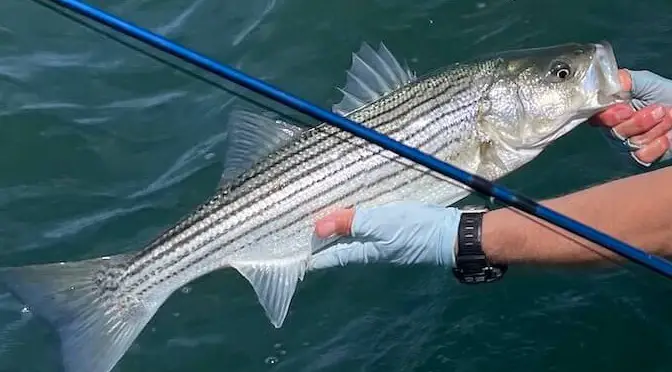
Key Takeaway: Streamer fishing is an effective way to target aggressive fish in rivers and creeks, lakes and ponds, as well as saltwater environments. When casting your line with a streamer look for fast-moving water or deep pools that have structure like logs or rocks; this can help attract larger predators who will be enticed by the movement of the fly through the current. Keep in mind what size prey items are likely being eaten by your target species before selecting gear setup accordingly.
Species to Target With a Streamer
Fly fishing with streamers is a great way to target different species of fish. Streamers are designed to imitate baitfish, which makes them an attractive option for many predatory fish. Depending on the type of water you’re fishing in, there are a variety of species that can be targeted using streamers.
Trout: Rivers and streams provide ideal habitat for trout and other freshwater species like bass and pike. Trout will often take advantage of the opportunity to feed on smaller baitfish when they come across them in their environment. To effectively fly fish with streamers for trout, it’s important to cast your line across the current so that the current carries your lure downstream towards where the trout may be hiding or feeding. It also helps if you use a heavier line so that your streamer sinks quickly into deeper pools or pockets where larger trout might be lurking.
Pike & Bass: Lakes and ponds provide excellent opportunities for targeting both pike and bass with streamers as well as other large predators such as musky or walleye. When casting from shore, it’s best to cast out beyond any visible structure such as weeds or logs before retrieving your lure slowly back towards shore while twitching it occasionally along the way – this mimics how prey would move through the water column making it more enticing for these predators to strike at your lure!
If you have access to a boat, trolling around weed beds is another effective method since this allows you cover more ground while still keeping close enough proximity between yourself and potential targets – just make sure not to get too close otherwise they might spook away!
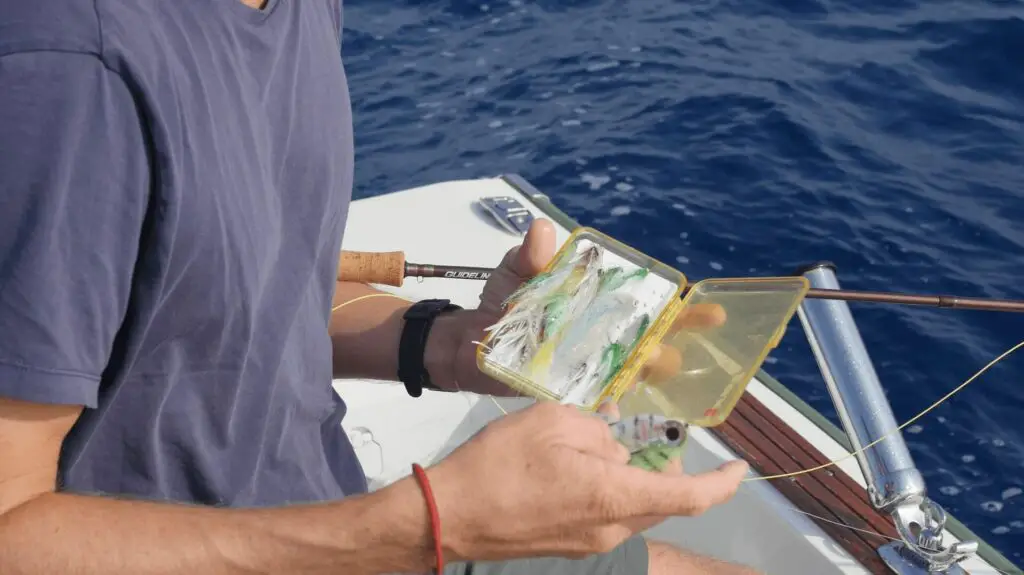
Saltwater Species: The ocean provides some unique opportunities when fly fishing with streamers due its vastness and abundance of various types of prey available throughout different depths within its waters – striped bass being one example!
Casting out from shore is usually not recommended here since saltwater currents tend to be much stronger than those found in rivers or lakes; however, wading out into shallow areas can give anglers better control over their casts allowing them greater accuracy when targeting specific spots where stripers may congregate during certain times throughout year (i.e., near bridgespiers).
Additionally, trolling further offshore using boats can also yield good results depending on what kind of bottom structure exists beneath surface level – rocky bottoms tend attract more striper activity than sandy ones do but either way having multiple lures deployed at once increases chances success significantly!
How to Fish with a Streamer?
Casting Techniques for Streamers
Casting streamers is an art form, but one that can be mastered with practice. When casting a streamer, it’s important to keep your rod tip low and the line tight. This will help you achieve greater distance on each cast while maintaining accuracy. To maximize your casts, use short strips of line and pauses between them. This technique allows the streamer to sink in the water column before being retrieved again. Additionally, when fishing from shore or wading in shallow waters, try using roll casts instead of overhead casts to reduce drag and maintain stealthy presentations for spooky fish.
Fly Line Selection for Streamers
Choosing the right fly line for streamer fishing is essential if you want success on the water. Generally speaking, heavier lines are best suited for throwing larger flies into deeper pools where trout may be lurking beneath overhanging vegetation or undercut banks. On smaller streams with pocket water and riffles where accuracy is key, lighter lines are preferred as they provide more delicate presentations without sacrificing distance on longer casts. If you’re unsure which type of line to choose based on conditions at hand, opt for an all-around weight forward floating line – this should cover most scenarios encountered while fishing with a streamer.
Key Takeaway: To successfully cast streamers, keep your rod tip low and line tight while using short strips of line with pauses between them. Choosing the right fly line for streamer fishing is essential to hooking a trout; an all-around weight forward floating line should have you covered in most scenarios. Master these techniques and you’ll be reeling in success.
Tackle for Streamer Fishing
When it comes to streamer fishing, the tackle you use is just as important as the technique. The right combination of rod, reel and line can make all the difference when trying to catch a big one.
Rods: When it comes to fly fishing with streamers, longer rods with a bit of backbone to cast bigger flies are usually better than shorter ones. Longer rods allow for more accurate casts and greater reach in fast-moving water or windy conditions. A 9-foot 5wt rod is a great choice for most situations but if you’re targeting larger fish then consider going up to an 8wt or even 10wt rod.
Reels: Reels should be chosen based on your intended target species and size of flies being used. For smaller trout streams, a lightweight reel with minimal drag will do the job nicely while larger rivers may require something sturdier that can handle bigger fish and heavier lines. Look for reels made from corrosion resistant materials such as aluminum or stainless steel so they won’t rust over time due to exposure to saltwater or freshwater environments.
Fly Lines: Fly lines come in many different weights so choose one that matches your rod weight accordingly (e.g., 5wt line for a 5wt rod). Streamer specific lines tend to have thicker cores which helps them cast heavy flies easier while also providing extra buoyancy needed when retrieving streamers through deeper pools or faster currents where traditional floating lines might sink too quickly and become difficult to manage during retrieves..
Leaders: Leaders are essential when fly fishing with streamers because they help keep your line out of sight from wary fish while still allowing them enough room to take your bait without feeling too much resistance from the leader itself. Generally speaking, leaders should be at least 7 feet long but this length can vary depending on where you’re fishing (i.e., small creeks vs large rivers). Fluorocarbon leaders are ideal since they’re nearly invisible underwater which makes them perfect for spooky fish that don’t want anything getting too close before taking their bait!
Overall, choosing the right tackle setup is key when it comes to successful streamer fishing – having the right gear will ensure you have an enjoyable experience out on the water!
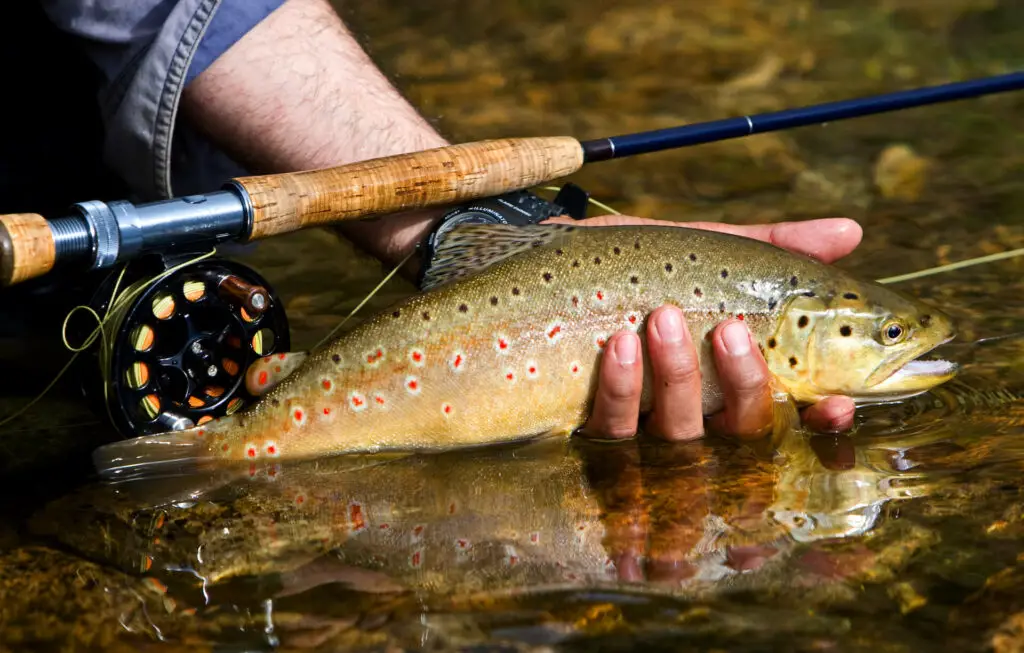
FAQs in Relation to Fly Fishing Streamers
Is streamer fishing really fly fishing?
Yes, streamer fishing is a type of fly fishing. It involves the use of weighted or unweighted flies that are designed to imitate baitfish and other aquatic prey in order to attract larger fish. Streamer fishing requires specialized techniques such as casting and retrieving quickly, using sinking lines, and manipulating the rod tip in order to get an effective presentation. This method is a viable option for pursuing various kinds of game fish, like trout, bass, pike and musky. Streamer fishing is an effective and popular way to target large fish, making it a valid form of fly fishing.
What makes a good streamer fly rod?
A good streamer fly rod should be lightweight, have a fast action and strong backbone to cast large flies with accuracy. The length of the rod should be suited for the type of water being fished; shorter rods are better for tight spaces while longer rods provide more power when casting long distances. Additionally, it should have an ergonomic handle that provides comfort during long days on the river. Quality components such as guides, reel seat and cork grip will ensure longevity and performance in all conditions.
Do streamers work for trout?
Yes, streamers can be effective for trout fishing. Streamers are typically large and flashy flies that imitate baitfish or other aquatic creatures in the water. When fished properly, they can draw strikes from larger trout looking to ambush their prey. For best results, use a slow retrieve and make sure to vary your speed as well as pauses during the retrieve so you don’t spook fish away with too much movement. Experimenting with different colors and sizes of streamers is also key when targeting specific species of trout.
What are the best times to fish streamers?
Streamers are best fished during periods of low light, such as early morning and late evening. These times provide the most favorable conditions for streamer fishing, since fish tend to be more active in these hours. Additionally, casting streamers can be done with greater accuracy due to improved visibility at lower light levels. Streamers should also be used when water clarity is poor or there is a high amount of surface disturbance from wind or rain; this helps mask any unnatural movement that could scare off potential targets.
Conclusion on Streamer Fly Fishing
Streamer fishing can be an effective technique when baitfish are present or after heavy rainfall. To get started with streamer fishing, choose your fly line carefully and cast it into areas of high activity such as riffles or eddies. With practice you will soon become proficient at casting these large flies accurately and efficiently.

